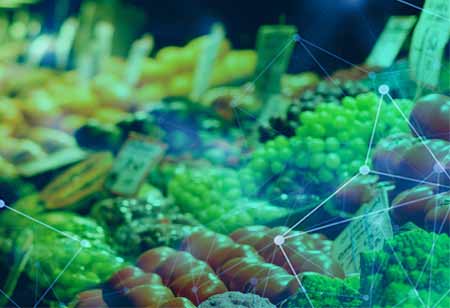Thank you for Subscribing to Food Business Review Weekly Brief
Advanced Technology Redefines the Future of the Food& Beverage Industry.
In today's world food and beverage (F&B) market, technology plays a crucial role, and with an ever-expanding menu of tech items

By
Food Business Review | Monday, May 31, 2021
Stay ahead of the industry with exclusive feature stories on the top companies, expert insights and the latest news delivered straight to your inbox. Subscribe today.

Market forces require F&B businesses to attain efficiency and agility in their processes and incorporate new technologies to stay competitive in today's Food& Beverage industry.
Fremont, CA: In today's world food and beverage (F&B) market, technology plays a crucial role, and with an ever-expanding menu of tech items, firms must adopt and adapt to meet the needs of their consumers. Customers expect healthier, less processed, natural, and local goods; hence, product quality and safety are prime priorities.
More technology advancements are developing to aid define the future of the F&B industry as we advance more into the digital era. With the immense upheavals in the industry over the last few years, the focus has changed from imitation to innovation.
Technology has been a basic driver of many developments in the F&B business in recent years. It has had the best impact on every aspect of society - it is undoubtedly, altering the food and beverage industry. It supplies consumers with the maximum convenience they seek, whether dining out or ordering food to be delivered to their door and assists restaurateurs in taking their businesses to the high level.
Consider tablet-based ordering at airport terminals, food preparation, shipping packing innovations, robotic bartenders, and even augmented reality interactions at the point of sale. Food& Beverage firms aiming to make a technological splash must consider several factors as they work to connect technological adoption with their customers' needs and desires.
When it comes to product enhancement, customer service, and brand experience, the most significant thing to remember is that technology should be relevant and convenient for the end-user. The consumer's shifting focus on consumer lifestyle and the lens we live in continues to evolve, and brands must adapt.
Time limitation, a need for convenience, and understanding or transparency of a product's lifespan are essential considerations.
We've understood that ensuring that the brand experience continues at home is critical to developing this technology-driven convenience. In terms of transparency, today's consumers want to know where a brand's product, ingredients, and other ingredients come from, how the product was manufactured, how it arrived, and quality assurance.Technology is crucial throughout a product's lifecycle, and expressing it is essential for brand loyalty and word of mouth.






